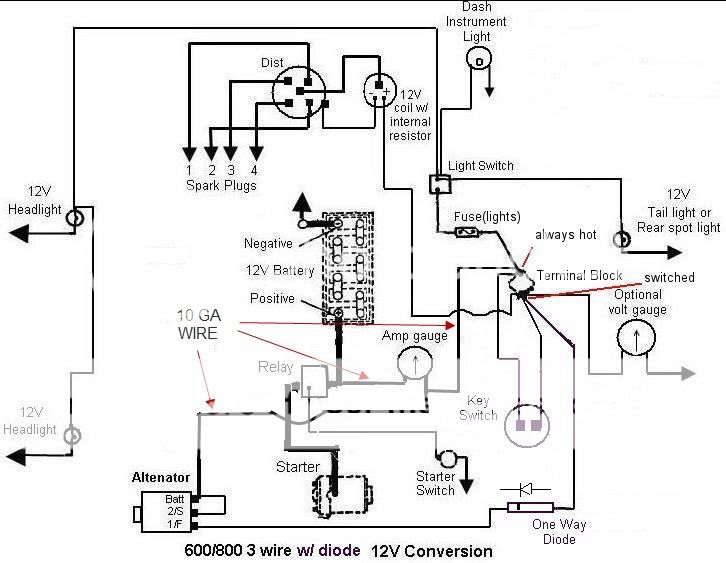Thanks to all who helped me. I got it charging ok now. I jumpered the F term to batt stud
at alt ran large wire from alt to load side of amp meter along with lights ran wire from
sol where batt connects to other side of ammeter. the amps drop off right away after start
up. Only thing you have to rev it up a little at first to get it to charge. SOme guy named
SOund Guy told me to run wire from R term on alt to key sw but I cant get at it right now
maybe that would help He said it would make a 3 wire out of it. Sorry for asking so many
dumb questions but I feel more confident now. We all cant be as smart as others.Thats what
makes the world go around.
at alt ran large wire from alt to load side of amp meter along with lights ran wire from
sol where batt connects to other side of ammeter. the amps drop off right away after start
up. Only thing you have to rev it up a little at first to get it to charge. SOme guy named
SOund Guy told me to run wire from R term on alt to key sw but I cant get at it right now
maybe that would help He said it would make a 3 wire out of it. Sorry for asking so many
dumb questions but I feel more confident now. We all cant be as smart as others.Thats what
makes the world go around.


